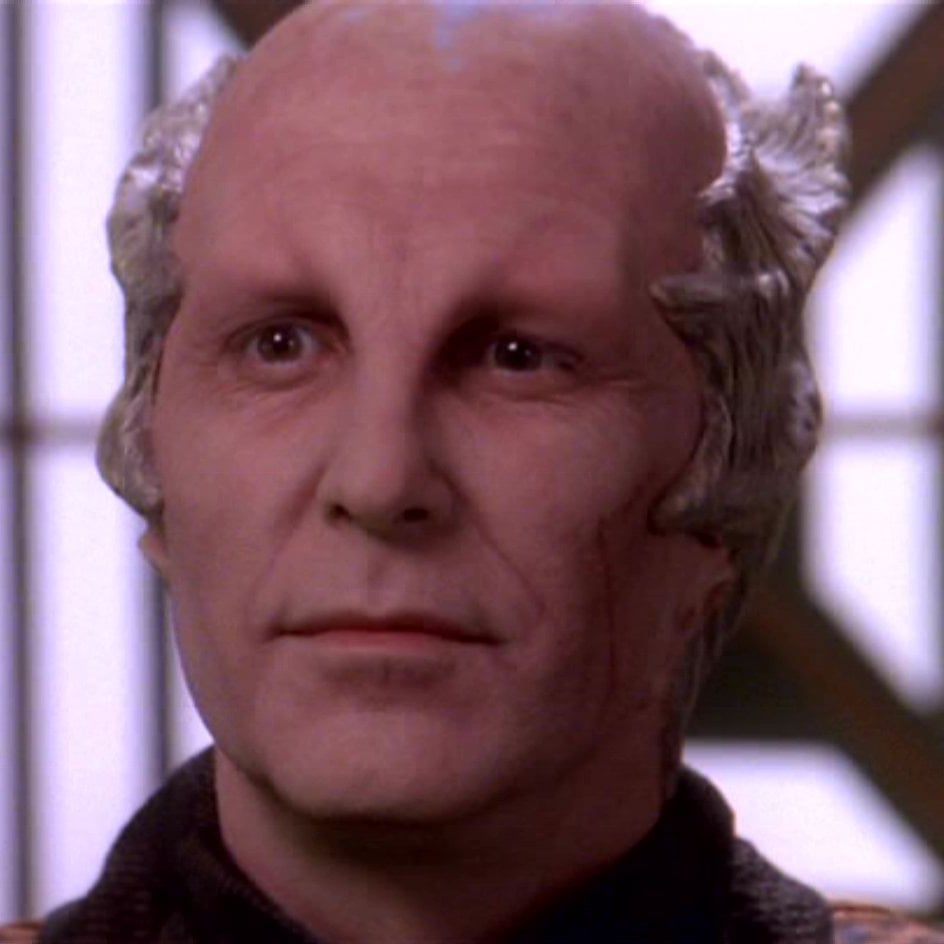Too narrow, hidden, minimal feedback…
UX design got better and better for many years…but it has definitely been regressing over the past few years, IMO. It’s weaponized minimalism at this point. Because it “looks cool, bro”.
It’s a variant of enshittification.
The overuse of the word enshittification drives me crazy.
Enshittification of “enshittification”
/s
Yes, thank you! I thought I was the only one. I feel like an old man yelling at the clouds every time I see it.
Maybe listen to that feeling.
GOT EEM
Fuck off you little cunt
Ooh, we have an internet tough guy over here.
Yup, and when I used it, I knew someone would bitch about that. It’s funny how people get hung up on their pet peeve more than they do the more serious underlying issues we’re talking about here. It’s the same phenomenon politicians and wealthy elites use to keep us fighting each other over trivial culture war bullshit instead of pulling together to improve our material interests.
Buy!!!?
[YES SPEND ALL MY MONEY]
[no]
Then you go to click [no] and the web page magically loads something else above it, which moves the page contents, forcing you to click the [yes].
LOL, harsh facts right here.
applying any design language feels wrong. it’s pure manipulation – i remember being forced onto the official twitter app and couldn’t believe there wasn’t a scroll bar. i felt lost; the timeline felt infinite, swallowing
I would are that the design industry has gotten better about understanding a user’s core motivations, and how design can solve business problems, but it’s gotten worse at classic interaction design / HCI.
The UX industry is FULL of bootcamp people or former graphic designers who never really studied or were passionate about interaction models.
As with engineering, the demand for UX designers is so high that a lot of mediocre talent can easily get a gig.
Those scenarios you paint definitely exist.
In my decades of work experience, I’ve also seen it play out a few ways. Sometimes the shop creating the software is too cheap to hire a real UX designer, and they make some poor coder do their best with it (and the coder will usually admit they are not good at it and is frustrated with being coerced into it). Sometimes they hire a good UX person, but that person is constantly overridden / micromanaged by some “marketing genius” MBA type with horrible ideas of user behaviors they want to “push” and other behaviors they want to “disincentivize” in the UX.
On a few (rare) projects, I’ve seen it done correctly where the UX designer is considered a vital part of the team and their input is valued and they do a good job and focus on what users actually want and need.
Some businesses still understand that if your customers are happy, everything else tends to go better for your businesses. But in this era of relentless enshittification, more and more businesses are looking at their customers at naughty children and/or suckers to be exploited. I keep hoping for a massive backlash against this trend. But it feels like it has to get even worse before it will get any better. They have conditioned younger customers to just expect shit products, shit service, and shit subscriptions for everything. UX design has gotten caught up in this sea change, unfortunately.
deleted by creator
for whatever reason
Flashy sleek shit gets invested in.
Outside of business specifically oriented towards people with accessibility issues, the energy just doesn’t translate into VC.
Companies who do try to shoehorn it in when products are more mature usually have:
-
A codebase with a frustrating amount of refactoring in order to retroactively get things in line.
-
Development inertia where it’s seen as a low value activity among developers and product owners
-
Lack of clear guidance/tools/processes to QA new work
-
Lack of will to retroactively identify the breadth and scope of changes you even want to make
There is no mystery. It’s not going to get you sexy VC money at the beginning, and then it’s bizarrely more work than you’d think once your project is sufficiently large.
That doesn’t explain why already established products are ditching things like plainly visible scroll bars in products like Microsoft word and other content viewers.
That’s true. I can speak from experience how I’ve seen it go down in many products, but no idea what apple and Microsoft are thinking.
It’s bizarre, because usually at some point in size, companies will start to explicitly have accessibility UAT processes. Even directorship roles specifically with that responsibility
It’s bizarre, because usually at some point in size, companies will start to explicitly have accessibility UAT processes. Even directorship roles specifically with that responsibility
I used to be a programmer for a large cable company (rhymes with “bombast”) and at one point I was the only programmer there working on accessibility in all their mobile products. The executives there at all levels had a shocking contempt for accessibility as something to even be concerned about at all and it showed in the disastrous state of all their apps. The only reason they even began to address the problem was the threat of million-dollars-per-month fines from the FCC for all the accessibility audit failures. They even hired a blind guy as accessibility VP but he quit in despair over the corporate lack of concern after just a few months.
This. And it doesn’t only apply to companies. I have a personal blog with a couple accessibility issues that I haven’t bothered to fix because I’ve built a lot of my CSS around my bad HTML. Part of the issue is that I built my site as a school project for a web design class I was taking, so code quality wasn’t great. One day I might redesign it better, but I don’t have the energy for now.
-
deleted by creator
That scroll hijacking legit feels like getting stunned in call of duty or something, suddenly your mouse just doesn’t want to do what you tell it to.
Scroll bar hiding/skinny scroll bars are for people who don’t use them.
Apple hides them by default because they expect you to use the trackpad/scroll pad(?) on the magic mouse.
And just straight up broken by idiocy like infinite scroll.
I would imagine the same designer who implements infinite scroll would also design bad scrollbars
I recently had to talk a designer out of implementing a “webpage progress indicator” that was a thin horizontal bar across the top of the page that filled in as you progressed through the content.
deleted by creator
I like it for articles. It shows progress through the text, not down the page, which are two different metrics which can differ wildly.
links that are only modal floater windows drive me insane too. this isn’t anything! make a website!
Hey, it’s difficult to figure out how to present large amounts of information in a usable fashion. So let’s just NOT EVEN FUCKING BOTHER and just put everything into a gigantically long list instead.
It’s not that it’s difficult, this method encourages “doomscrolling” because the user doesn’t actively decide to go to the next page.
The Nielsen Norman Group observes that “infinite scrolling minimizes interaction costs and increases user engagement.” Infinite scroll keeps users engaged and on the page because the page never ends: there is always something more to see, no wait to see it, and very few interactions.
deleted by creator
But if we show a full-sized scrollbar all the time, we lose all that space that we could have left completely empty otherwise!
Yeah, losing function over form is annoying.
They need that extra space to cram in more ads!
I would like my scroll bars back please. Scroll wheel on a mouse is not enough. Neither is a fling gesture on touchpad or screen.
I am sick of modern minimalist UI where functionality is not a priority.
I always prefer win32 applications for this reason.
Heck, I even prefer the ultra-skeuomorphic textured-everything approach of Mountain Lion-era OS X over the current ultra-minimalist approach where everything is either a hairline or a big flat monocolored shape.
It actually makes it harder to parse the UI when a button, a text field, a label, and a random part of the window can look exactly the same. I’d rather take a file manager that tries to look like a 1980s hifi stereo.
Or you know, a reasonable middle ground.
In the early '90s Alan Cooper wrote a book called About Face which unfortunately has dropped off the face of the earth as far as its influence on UI design is concerned. One of its many sensible proscriptions was that UI elements that can be interacted with should be visibly distinct from elements that are just there to display information. As a programmer, it drives me insane to have to use any of the modern apps that have completely abandoned this principle - or to have to deal with designers who have literally mocked me for thinking this is important.
Yes, that is the worst aspect of modern UI design. Interactable elements that are distinguished from labels solely by color because accessibility is so 2010. Labels that have that same color for emphasis. Flat black windows with black borders in front of other flat black windows that will get focus if you accidentally click them.
Or what the article is about: Tiny, hidden scroll bars because Fitts’s law means nothing and every user has a touchscreen and 20/20 vision.
deleted by creator
That shit started with win2k/winme already. That’s when the borders of controls were made thinner, icons were made with less contrast and the first flat buttons that only show their border on hover were being used. So it’s quite some time already that this is going downhill.
(tbf, I think the flat buttons were mostly intended for toolbars, but still, style won over function)
Fucking ribbon menus can eat my salty ass. Why does everything take up so much God damn real estate on my screen? I’ve got work to do!
Take Slack, as an example. Anyone gotten the UI update? Christ on a cock, it’s BAD. Hope you use slack full-screen because you’re gonna need that to see the actual chat/conversations area. They added another sidebar now. That’s 3 sidebars stacked up, and only 1 of them is even useful ( channels ) . Who is out there using so many workspaces, that they need a sidebar? Why does a sidebar need a sidebar sidebar?
Why do all my office and CAD programs take up the entire top 5th of my screen with menus?
Oh, you wanted to actually read that email? Damn sorry we only gave you less than half the screen to do that on, in outlook. But the sidebars are super important you see!
You can hide ribbon menu afaik by double clicking on any tap. I’m sure least MS Office support it.
Yeah but the whole UI is designed to use the ribbon so
I see.
So, is there a better alternative to ribbons?
I am a developer and I am genuinely interested to know if there’s a better way to make frequently used buttons accessible.
deleted by creator
Menus are a simple, elegant and time effective way of organizing a complex GUI
I think what killed menus are all the people who can’t fucking read.
I had no issues with the style before ribbons.
Best way I can put it is by comparing the CAD programs I use. Go look up (PC not Mac) screenshots of Autocad2023 versus Rhino7. I prefer Rhino7, and it’s everything to do with how tools are organized, nothing to do with the massive color differences, or command prompt location. Of course, both are highly customizable.
I also really like Photoshop’s layout, and Blender in theory, bit not in practice (idk why, maybe just too many things overall everywhere).
I concede the issue here is that I use programs that are very visual based, so when I switch to primarily text programs, the lack of real-estate is very frustrating. I doubt that I am alone in this however, the overall population is admittedly increasingly visual.
Control key shortcuts.
I love it when scrollbars are like, half an atom wide. Makes it easy to use the website.
I feel you, so I have researched this:
For Firefox you can change the width /style of the scrollbar:
(A) In a new tab, type or paste
about:config
in the address bar and press Enter/Return. Click the button accepting the risk.
(B) In the search box in the page, type or paste
widget.non-native-theme.scrollbar.style
© Press the Return or Enter key to find the setting. Click the Edit (pencil) button on the right side of the widget.non-native-theme.scrollbar.style setting.
(D) Delete the current 0 value for the default OS style scrollbar. Then input the value 1 (Mac OS X), 2 (GTX), 3 (Android), 4 (Windows 10), or 5 (Windows 11) in the widget.non-native-theme.scrollbar.style box for the scrollbar style you want to change to. For example, enter 4 to change the scrollbar to the default Windows 10 design.
(E) Click the Save button on the right side of the widget.non-native-theme.scrollbar.style setting to apply.
Also for the hiding:
Windows: Settings > Ease of Access > Display > Automatically hide scroll bars in Windows
Mac: System Preferences > General > Show scroll bars
It could be that websites are being made unbearable, to pressure users into switching to the site’s mobile apps, which are generally spyware. I can’t stand looking at homedepot.com on a phone, for example. Even if I don’t look at the screen, I can feel the phone warming up in my hand as the crapware javascript on the site drains the phone battery.
I just generally don’t browse the web on mobile unless I’m away from home and don’t have a computer nearby. Phones are inferior computers.
What the fuck is it with apps just making the scrollbar completely hidden until you scroll with the mouse or keyboard? Microsoft seems like the biggest offender with this. It’s so irritating, they’ve got more than enough space to just keep it around all the time, it’s what I’m expecting to find there, hiding it just makes more annoyed each time. It’s not as bad if you’re using a mouse with a scroll wheel, but on a laptop with a trackpad it’s beyond annoying.
deleted by creator
I like the way GTK is doing it. You have a thin scrollbar that is overlayed over the content and has no background (so just the knob) but when you get near it with the mouse, the background appears and it becomes double as thick. That way you’re not wasting any space but you don’t have this issue of it being hard to use either.
What I also like about GTK’s scrollbars is that the scrollbar only auto hides when the scroll area completely looses focus. As long as the mouse cursor is hovering anywhere in the scrolling region the scrollbar is visible, so you don’t have to scroll first to see where the scroll position is.
I have a broken scroll wheel (which happens every 5-10 years, whenever the lifecycle of my mouse reaches its end), and I feel the pain every freakin time I wanna scroll.
Nowadays with such high-resolution screens I just can’t understand why it’s needed to make those scrollbars so narrow.
Because the high res screens of the target audience are just 6.5" big.
So, to tl;dr the article: size does matter
It’s not the length of the scrollbar, it’s how you use it (and also girth)
Yeah seriously. Like I am okay with them auto hiding when the mouse is away, but nowadays, even when you’re mousing over them, they’re only like 3-4px wide. What kind of a mouse target is that?! Ridiculous.
















